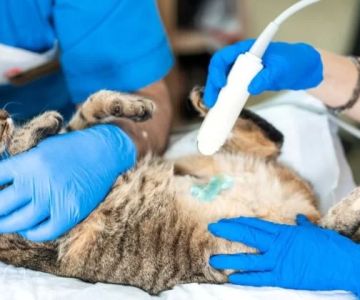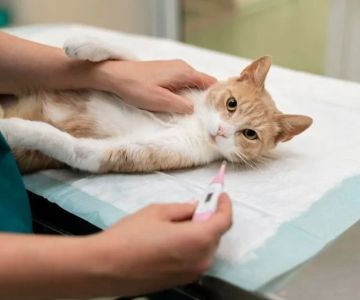- #Building-a-harmonious-multi-pet-household
- #Understanding-different-pet-personalities-and-needs
- #How-to-introduce-pets-to-each-other-safely
- #Preventing-conflicts-and-creating-routines
- #Real-stories-about-managing-multi-pet-challenges
- #Expert-guidance-for-long-term-success-with-multiple-pets
1. Building a Harmonious Multi-Pet Household
Learning how to manage multiple pets in one household is both rewarding and uniquely challenging. Every pet brings its own personality, history, and needs into your home, and blending them into a peaceful “family ecosystem” takes time and intention. Some families thrive with four or five pets, while others struggle with just two simply because their animals have conflicting temperaments.
One of the most important steps is acknowledging that pets, much like people, require emotional space, predictable routines, and a sense of security. When those needs are met, harmony becomes achievable—even in a household that might feel a bit chaotic at first. If you ever need help addressing behavioral concerns, the team at 【Hidden Brook Veterinary 】can provide guidance on creating calmer environments for multi-pet homes.

6370 North Point Pkwy, Alpharetta, GA 30022, USA
See Details2. Understanding Different Pet Personalities and Needs
2.1 Recognizing Personality Conflicts
Each pet has a different natural temperament. Some are playful and social; others are timid, territorial, or highly independent. A confident dog may overwhelm a shy rescue cat, and a curious young kitten may annoy an older senior cat who values quiet time. Knowing these personality contrasts helps you anticipate friction before it happens.
2.2 Meeting Species-Specific Requirements
Pets of different species communicate differently. Dogs rely heavily on body language; cats use scent and routines; rabbits, birds, or reptiles require specific environmental setups. Understanding these needs prevents misunderstandings and unnecessary stress.
2.3 Balancing Individual and Group Attention
Multi-pet homes often struggle with attention distribution. Pets may become jealous when another receives treats, affection, or training time. Establishing separate one-on-one bonding sessions makes each pet feel valued and seen.
3. How to Introduce Pets to Each Other Safely
3.1 Slow and Controlled First Meetings
Introducing pets too quickly is one of the most common mistakes. A new dog walking straight into a resident cat’s territory can instantly create fear and long-term resentment. Slow introductions—through scent swapping, controlled distances, or baby gates—help both pets build trust before meeting face-to-face.
3.2 Using Neutral Territory
Neutral spaces eliminate territorial behavior. For example, introducing two dogs in a park or quiet outdoor area helps reduce defensiveness. Once they’ve established a positive connection, you can gradually shift to indoor spaces.
3.3 Rewarding Calm Behavior
Praising and treating pets for calm behavior reinforces positive associations. When a cat sits relaxed near a dog instead of running away, or when a dog chooses to ignore instead of chase, reward that moment immediately.
4. Preventing Conflicts and Creating Routines
4.1 Establishing Feeding Zones
Food aggression is common in multi-pet households. Separate feeding spaces—different corners of the kitchen, separate rooms, or elevated feeding stations for cats—can prevent tension and overeating.
4.2 Managing Playtime and Energy Levels
Different pets have different energy needs. A high-energy dog may unintentionally stress a cat who prefers quiet environments. Offering daily structured exercise for energetic pets helps them release energy in healthy ways.
4.3 Creating Safe Retreat Spaces
Every pet needs a place where they can hide or rest without interruption. This may be a cat tree, a crate, a quiet bedroom, or a small pet enclosure. When pets know they have safe zones, conflicts decrease dramatically.
5. Real Stories About Managing Multi-Pet Challenges
5.1 A Dog and Cat Who Became Unexpected Best Friends
A family in Ohio adopted a senior cat after already owning a playful young Labrador. At first, the two were kept apart because the cat was terrified. Over several weeks of slow introductions and careful scent swapping, the cat began exploring the dog’s presence. Within months, they were sleeping side-by-side. Patience created a bond that surprised everyone.
5.2 When Two Cats Couldn’t Agree on Territory
A viral story online described two cats who constantly fought over window perches and litter box locations. The problem ended only when the owners added more vertical spaces, a second litter box, and separate rest areas. The change showed how environmental improvements can completely transform behavior.
5.3 The Case of the Possessive Toy Hoarder
One dog became obsessive over toys, growling whenever another approached. The family implemented toy rotation and supervised playtime, and soon the tension faded. Sometimes, structured rules make all the difference.
6. Expert Guidance for Long-Term Success With Multiple Pets
6.1 Consistency Builds Trust
Consistent rules help pets understand expectations—meal times, quiet hours, training routines, and boundaries. Predictability reduces anxiety for all pets in the home.
6.2 Monitoring Health and Behavior
Behavioral changes often signal health issues. Increased aggression, hiding, loss of appetite, or clinginess may indicate stress or illness. Regular checkups ensure each pet stays healthy and emotionally balanced. For professional help, 【Hidden Brook Veterinary 】can support you with behavior consultations and wellness care.
6.3 Encouraging Positive Group Dynamics
Pets learn from each other. A confident pet may help socialize a timid one. A calm older pet can model better habits for a hyperactive young pet. Support these dynamics by reinforcing cooperative behavior with praise and rewards.











